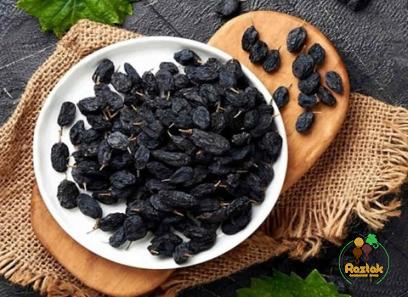However, there is an ongoing debate among health enthusiasts about which variety, green or brown, is superior. In this article, we will explore the differences between green raisins and brown raisins and shed light on their various health benefits, taste profiles, and culinary applications. Let the raisin debate begin! 1. Health Benefits: Both green and brown raisins are known for their nutritional value, but they do have some differences. Brown raisins are essentially dried grapes, packed with essential minerals like iron, potassium, and calcium.

.
 They are also rich in dietary fiber, aiding digestion. Green raisins, on the other hand, have a unique advantage as they are made from grapes at an earlier stage when they are packed with chlorophyll. This makes them an excellent source of antioxidants, promoting better skin health and overall well-being. 2. Taste and Texture: When it comes to taste, brown raisins have a more pronounced natural sweetness, making them an ideal choice for baked goods, trail mix, and cereals. Their chewy texture adds a delightful touch to various culinary preparations.
They are also rich in dietary fiber, aiding digestion. Green raisins, on the other hand, have a unique advantage as they are made from grapes at an earlier stage when they are packed with chlorophyll. This makes them an excellent source of antioxidants, promoting better skin health and overall well-being. 2. Taste and Texture: When it comes to taste, brown raisins have a more pronounced natural sweetness, making them an ideal choice for baked goods, trail mix, and cereals. Their chewy texture adds a delightful touch to various culinary preparations.
..
 Green raisins, on the other hand, offer a more subtle and tangy flavor, which works well as a complement to savory dishes like salads, meat stews, and chutneys. The softness of green raisins lends itself to blending well in smoothies and sweet spreads. 3. Culinary Applications: The distinctive tastes and textures of green and brown raisins make them suitable for different culinary purposes. Brown raisins are widely used in cooking, primarily due to their ability to retain their shape and texture when subjected to heat. This makes them ideal for baking cookies, bread, and cakes, as well as for adding depth to sauces and confections. Green raisins, on the other hand, add a burst of tangy sweetness to salads, fruit mixes, and savory dishes. They are a key ingredient in traditional Middle Eastern and Mediterranean cuisine.
Green raisins, on the other hand, offer a more subtle and tangy flavor, which works well as a complement to savory dishes like salads, meat stews, and chutneys. The softness of green raisins lends itself to blending well in smoothies and sweet spreads. 3. Culinary Applications: The distinctive tastes and textures of green and brown raisins make them suitable for different culinary purposes. Brown raisins are widely used in cooking, primarily due to their ability to retain their shape and texture when subjected to heat. This makes them ideal for baking cookies, bread, and cakes, as well as for adding depth to sauces and confections. Green raisins, on the other hand, add a burst of tangy sweetness to salads, fruit mixes, and savory dishes. They are a key ingredient in traditional Middle Eastern and Mediterranean cuisine.
…
 4. Antioxidant Content: As mentioned earlier, one key advantage of green raisins is their high antioxidant content. Antioxidants are essential for neutralizing free radicals in the body, protecting against cell damage, and reducing the risk of chronic diseases. Green raisins, therefore, offer an added health benefit with their enhanced levels of antioxidants, including flavonoids and polyphenols. Conclusion: While both green raisins and brown raisins have their unique benefits and taste profiles, the choice ultimately boils down to personal preference and the culinary application. Brown raisins offer a sweeter taste and chewy texture, making them ideal for baking and snacking, while green raisins cater to those who prefer a tangy, antioxidant-rich option, which works well in savory dishes and smoothies. In the end, including both varieties in your diet can provide a diverse range of flavors and nutritional benefits, ensuring a well-rounded and healthy lifestyle.
4. Antioxidant Content: As mentioned earlier, one key advantage of green raisins is their high antioxidant content. Antioxidants are essential for neutralizing free radicals in the body, protecting against cell damage, and reducing the risk of chronic diseases. Green raisins, therefore, offer an added health benefit with their enhanced levels of antioxidants, including flavonoids and polyphenols. Conclusion: While both green raisins and brown raisins have their unique benefits and taste profiles, the choice ultimately boils down to personal preference and the culinary application. Brown raisins offer a sweeter taste and chewy texture, making them ideal for baking and snacking, while green raisins cater to those who prefer a tangy, antioxidant-rich option, which works well in savory dishes and smoothies. In the end, including both varieties in your diet can provide a diverse range of flavors and nutritional benefits, ensuring a well-rounded and healthy lifestyle.











Your comment submitted.